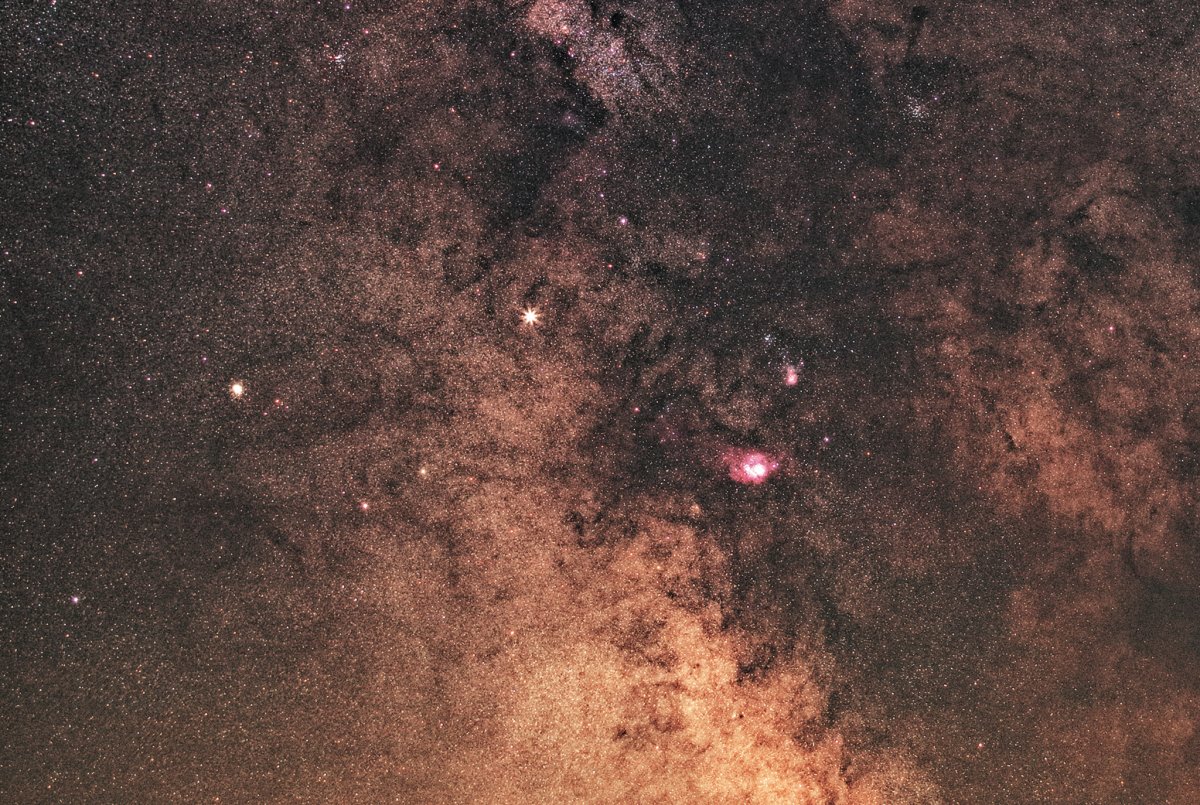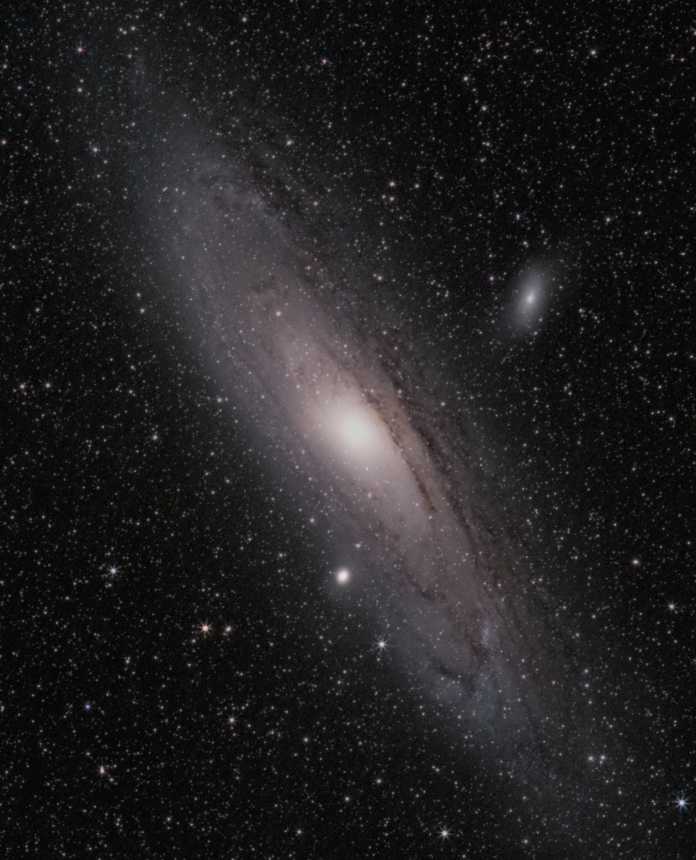With simple means: deep sky photography for beginners

Fascinating images of the Milky Way, beautiful nebulae and distant galaxies: Katja Seidel shows how deep-sky photography can be done without expensive professional equipment.
Table of Contents
My first look through a telescope was filled with excitement and disappointment at the same time. Excitement about being able to see the structures of distant nebulae and galaxies “live”. I felt disappointment because everything could only be seen in black and white. It didn’t have too much in common with the wonderfully colored pictures from books and magazines. As a hobby photographer for many years, my ambition was quickly aroused to take such pictures myself. At first I was afraid that I would have to invest a lot of money in special equipment, but I quickly learned that it doesn’t have to be.
c’t photography 4/22

Exciting motifs: play of photogenic opposites * full format cameras up to 1500 euros * carefree photography on the water * desert photography * macro specialists from Laowa in the test * vintage lenses with special bokeh * photographing people and their animals * practical test: hip belt systems * photographing slides and negatives * Develop your own image styles with color grading + workshops on color and contrast development * Work faster with the graphics tablet
The focal length of a normal telephoto lens (fixed focal length or zoom) is already sufficient for many celestial objects, so there is only one problem to overcome: the earth’s rotation. This means that you can only achieve a round star image if you use short exposure times. In the telephoto range of 150 to 300 millimeters, for example, only 1 to 3 seconds are possible before the stars become line-shaped. This is often not enough for an attractive astrophoto. The solution is to move the camera with the earth’s rotation, and thus be able to record round stars over many seconds or even minutes. Another technique in astrophotography is to add many such individual shots together.
First of all, you should know what you can basically record with your existing system camera – with and without mirror – and a normal telephoto lens in the focal length range between 70 and 300 millimeters. Two things are important for this: the brightness and the size of the celestial objects. However, since both factors also depend to a large extent on the distance of the objects from Earth, one does not speak of absolute values, but of an “apparent brightness” and “apparent size”. There are various ways of getting started with deep-sky photography without a telescope Nebulae and galaxies that appear large and bright enough for us on Earth to photograph them impressively with simple means.
Depending on the season, there are various entry-level objects that are relatively easy to find in the sky and require no special equipment other than tracking and a programmable remote release.
More info
Archive article: This article was first published on May 15, 2019.
The status of the article is the publication date
Pleiades
This open star cluster, visible from July to April, is very easy to find in the sky due to the brightness of its main stars and is often also called the “Seven Sisters”. The characteristic blue reflection nebulae, which surround many of the stars and reflect their light, are particularly interesting for astrophotography.
Orion Nebula
This emission nebula in the well-known constellation of Orion is certainly the most popular winter object because it is relatively bright, large, and easy to find. Even short exposure times of a few seconds give an idea of the beauty of this nebula. It can be seen in the sky for part of the night from around November to February.

Andromeda Galaxy
From August to January our nearest neighbor galaxy can be found in the constellation Andromeda in the night sky. At a distance of more than 2.5 million light-years, it represents the most distant object that can be seen with the naked eye from a dark location on Earth.

comets
These special and mostly unique motifs in the starry night sky often require a little patience and a good portion of luck. In addition to recurring (periodic) comets, astronomers are constantly discovering new specimens, which are then usually only visible in the sky for a few weeks. Depending on the brightness development, which can never be predicted with any degree of accuracy, they are either visible to the naked eye or only to the camera sensor. One of the last photographically visible comets was honored in December 2018: 46P / Wirtanen.





